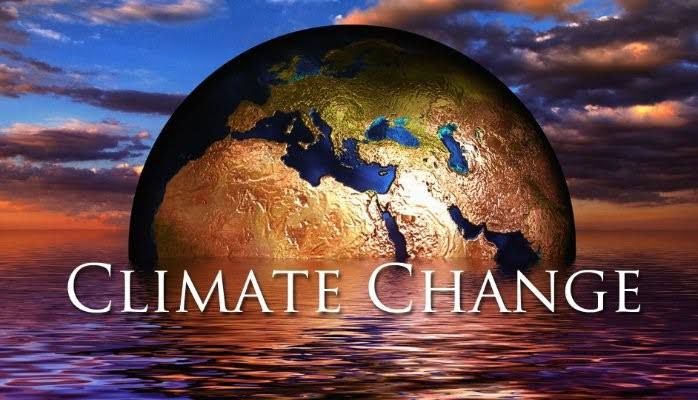Introduction
World Environment Day is annually celebrated on 5th June. It is celebrated to create a global platform which helps in raising awareness and taking legal action regarding critical environment issues. Legal response to climate change requires a complex framework of international treaties, national legislation and local regulations to control the emission of greenhouse gas and adapt to the impact of climate change.This article provides the overview of mechanisms present to deal with climate change, international agreements and national policies and frequently raised issues regarding climate change.
Abstract
Climate change, being a crucial global issue requires legal actions at international, national and local level. This article presents the efforts taken at international level in form of UNFCC, Kyoto Protocol and Paris Agreement, whereas approaches taken by the legislature of USA, EU and China also play significant role in climate growth. And policies like NAP, and water conservation movement help at local level to manifest climate growth. This article also emphasize on the importance of climate litigation, which is grounded on human rights and corporate accountability, as a powerful tool for driving climate change.Additionally, this article underscores the need of coordinated efforts and creative legal approaches to address the pressing issues of climate change.
International Agreements
International legal responses to climate change is primarily based on following policies-
- United Nations Framework Convention on Climate Change ( UNFCC)
UNFCC, adopted in 1992, is foundation for international climate negotiations. Its main objective is to stabilize the concentration of greenhouse gas in the the atmosphere at a level that will prevent interaction of human with climate change from turning dangerous. To enable sustainable development and moreover, stabilization to take place in the time frame that allows ecosystem to adapt naturally.
2. Kyoto protocol
Kyoto Protocol was signed on December 11th,1997 in Kyoto,Japan and and entered into force in 2005. It is the first implementation of UNFCCC. Its main objective being greenhouse gas reduction, to reduce the impact of climate change on developing countries by creating a climate change adaptation fund, and to monitor and enforce the protocol’s commitments.
3. Paris Agreement
Paris agreement, adopted in 2015 and enforced in 2016, brought a pivotal shift in climate change regime. Where Kyoto Protocol was in favour of developing countries, Paris agreement required commitments from all countries. This agreement emphasized that each nation sets its own target and report on the climate progress.
National Responses
- Approaches by United States
USA has fragmented approach to climate regulation as provided-
- Clean Air Act authorizes the Environment Protection Agency ( EPA) toregulate emission of greenhouse gas and it is a crucial legal instrument at federal level.
- Clean Power Plant under Obama administration, which aimed to reduce carbon emission from power plants, faced many legal challenges and was ultimately repealed under the administration of the Trump.
- The Biden administration rejoined the Paris Agreement in 2021, and introduced climate initiatives which involve the inflation Reduction Act, regarding renewable energy investment and reduction in greenhouse gas emission.
- European Union
The European Union has been leader in climate policy with the framework which support its climate initiatives such as-
- The EU Emission Trading System (EU ETS), which was established in 2005 is the world’s largest carbon market.
- The European Green Deal started in 2019, worked on the goal of making Europe the first climate neutral continent by 2050.
- China
China being the world’s largest emitter of greenhouse gases, has taken significant step to combat climate change-
- China targets reducing carbon intensity and increasing the share of non-fossil fuel in primary enery consumption through its 14th Five Year Plan (2021-2025).
- China also announced its goal to achieve carbon neutrality by 2060.
Litigation and Climate Justice
Emergence of climate litigation has ensured the protection of human rights in context of environment degradation and act as a powerful tool to hold governments and corporations accountable for their contributions to climate change.
- Human Right Based Approach
Legal claims based on human rights violations due to climate change are gaining traction. The landmark case of Urgenda Foundation v. State of the Netherlands set a precedent when the Dutch Supreme Court ruled that the government has a legal duty to reduce emissions to protect citizens’ human rights. Similar cases have been filed in various jurisdictions, emphasizing the link between climate action and the protection of fundamental rights.
2. Corporate Accountability
Corporations, particularly in the fossil fuel industry, are increasingly being targeted by climate lawsuits. Plaintiffs argue that companies have a responsibility to reduce their emissions and to disclose climate-related risks. Notable cases include the lawsuit filed by New York City against major oil companies for their role in contributing to climate change and the litigation against ExxonMobil for allegedly misleading investors about climate risks. International Trade and Climate Change
The intersection of international trade and climate policy presents both challenges and opportunities. Trade regulations and agreements can either hinder or promote climate action, depending on how they are structured.
1. Carbon Border Adjustments
Carbon border adjustment mechanisms (CBAMs) are proposed measures to impose tariffs on imported goods based on their carbon content. The European Union’s proposed CBAM aims to prevent carbon leakage by ensuring that imported products are subject to similar carbon costs as those produced domestically. This mechanism seeks to maintain the competitiveness of domestic industries while incentivizing cleaner production practices globally.
2. Trade Agreements and Environmental Provisions
Modern trade agreements increasingly incorporate environmental provisions to support climate goals. The Comprehensive and Progressive Agreement for Trans-Pacific Partnership (CPTPP) and the United States Mexico-Canada Agreement (USMCA) include chapters on environmental legal response to climate change 6 protection and commitments to implement multilateral environmental agreements. These provisions aim to ensure that trade liberalization does not come at the expense of environmental sustainability. Innovative Legal Mechanisms
As the urgency of climate action grows, innovative legal mechanisms are being explored to enhance the effectiveness of climate governance.
1. Climate Finance
Mobilizing financial resources is crucial for supporting mitigation and adaptation efforts, particularly in developing countries. Legal frameworks such as the Green Climate Fund (GCF) and climate finance commitments under the Paris Agreement aim to facilitate the flow of funds from developed to developing countries. Innovative financing mechanisms, including green bonds and climate resilience bonds, are also being developed to attract private investment in climate projects.
2. Rights of Nature
The recognition of legal rights for nature is an emerging legal concept that aims to shift the paradigm of environmental protection. Countries like Ecuador and New Zealand have granted legal personhood to rivers and ecosystems, allowing them to be represented in court and protected from harmful activities. This approach recognizes the intrinsic value of nature and its fundamental role in supporting life on Earth.
3. Climate Emergency Declarations
Several governments and jurisdictions have declared climate emergencies, signaling a heightened commitment to urgent and transformative climate action. These declarations, while largely symbolic, can catalyze legislative and policy changes by acknowledging the severity of the climate crisis and prioritizing climate action across all sectors of government.
Conclusion
The legal response to climate change is multifaceted, involving a dynamic interplay of international treaties, national legislation, local regulations, and emerging legal innovations. While significant progress has been made, challenges legal response to climate change 7 remain in ensuring effective implementation, enforcement, and equitable outcomes. The global nature of climate change requires coordinated efforts and solidarity among nations, with a strong emphasis on justice and equity. As the impacts of climate change become increasingly evident, the legal community must continue to evolve and adapt, harnessing the power of law to drive meaningful and lasting change. Through robust legal frameworks and innovative legal mechanisms, we can pave the way for a sustainable and resilient future.
Cases Involved:
The case of Urgenda Foundation v. State of the Netherlands is a landmark legal battle where the Urgenda Foundation, a Dutch environmental group, sued the Dutch government over its insufficient action on climate change. The foundation argued that the government’s inadequate policies and measures to reduce greenhouse gas emissions violated the rights of Dutch citizens by failing to protect them from the dangerous impacts of climate change.
In 2015, the District Court in The Hague ruled in favor of Urgenda, ordering the government to cut emissions by at least 25% by 2020 compared to 1990 levels. The court’s decision was based on human rights principles and the government’s duty of care to its citizens.
The Dutch government appealed the decision, but both the Court of Appeal in 2018 and the Supreme Court in 2019 upheld the original ruling. The Supreme Court’s decision emphasized that the government had an obligation to protect its citizens from the real and imminent dangers posed by climate change, reinforcing the idea that governments have legal duties to act on climate issues based on human rights obligations.
This case is pivotal because it set a precedent for climate litigation globally, showing that courts can hold governments accountable for their climate policies and enforce stricter emission reduction targets to protect human rights.
New York City vs. Major Oil Companies
In 2018, New York City filed a lawsuit against five major oil companies—BP, Chevron, ConocoPhillips, ExxonMobil, and Royal Dutch Shell—accusing them of contributing to climate change. The city argued that these companies knew about the harmful effects of burning fossil fuels and yet continued to promote and sell their products, leading to rising sea levels, extreme weather, and other climate-related damages that have cost the city billions of dollars in repairs and mitigation efforts. The lawsuit sought to hold these companies financially responsible for the damage caused by climate change. However, the case was dismissed in 2019 by a federal judge, who ruled that climate change issues should be addressed by the legislative and executive branches, not the judiciary.
Litigation Against ExxonMobil
In this case, ExxonMobil faced lawsuits from several state attorneys general and investors. One prominent example is the lawsuit filed by the New York Attorney General in 2018, accusing ExxonMobil of misleading investors about the financial risks posed by climate change regulations. The lawsuit claimed that ExxonMobil used two sets of figures to estimate the potential impact of future climate regulations on its business—one for internal use and one for public disclosures—thereby deceiving investors about the company’s true exposure to climate-related risks. After a trial in 2019, the New York Supreme Court ruled in favor of ExxonMobil, stating that the state had failed to prove that the company had committed fraud. However, the case highlighted the growing scrutiny and legal challenges faced by fossil fuel companies over their climate-related disclosures and actions.
Frequently Asked Questions (FAQs)
1. What is the primary objective of the UNFCCC?
Answer: The primary objective of the United Nations Framework Convention on Climate Change (UNFCCC) is to stabilize greenhouse gas concentrations in the atmosphere at a level that would prevent dangerous anthropogenic interference with the climate system. This goal is intended to be achieved within a timeframe that allows ecosystems to adapt naturally, ensures that food production is not threatened, and enables sustainable economic development.
2. How does the Paris Agreement differ from the Kyoto Protocol?
Answer: The Paris Agreement, unlike the Kyoto Protocol, includes commitments from all countries, recognizing the need for a global response to climate change. While the Kyoto Protocol established legally binding emission reduction targets only for developed countries, the Paris Agreement operates through a system of nationally determined contributions (NDCs) where each country sets its own targets and reports on progress. The Paris Agreement also aims to limit global temperature rise well below 2 degrees Celsius, with efforts to keep it below 1.5 degrees Celsius.
3. What is the significance of climate finance in addressing climate change?
Answer: Climate finance is vital for supporting mitigation and adaptation efforts, particularly in developing countries that lack sufficient resources. Legal frameworks like the Green Climate Fund (GCF) and commitments under the Paris Agreement facilitate the flow of funds from developed to developing countries. Innovative financing mechanisms, such as green bonds and climate resilience legal response to climate change 9 bonds, attract private investment in climate projects, helping to scale up efforts to combat climate change and build resilience.
Author :Anushka Maurya , a Student of University of Allahabad





